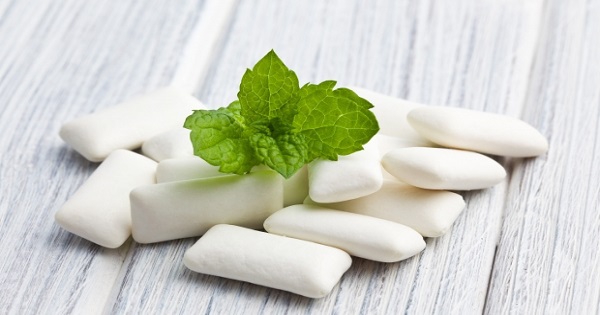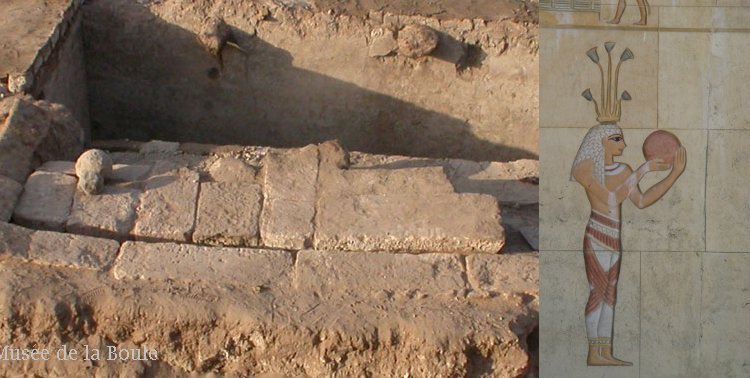Interesting Inventions of the Ancient Egyptians
Over thousands of years, the ancient Egyptians flourished, ushering in the most advanced ancient civilization the world has ever recorded. They were also known as great inventors, whose achievements changed everything from fashion to agriculture, so much so that we still see their influence today.
1. Use mint to cover your breath

Today, mints and gummies have become extremely popular, helping to cover our bad breath.
Just like in modern times, bad breath in ancient Egypt was often a symptom of poor oral health. The difference is that they have almost no way to cure this condition, but can only "live" with it.
To deal with the unpleasant smell from the mouth, the Egyptians invented mint combined with frankincense and cinnamon boiled with honey and made into small pellets.
2. Bowling

Bowling balls and runways discovered in ancient tombs in Egypt
At Narmoutheos, a settlement 90 kilometers south of Cairo dating back to the Roman occupation of the 2nd and 3rd centuries AD, archaeologists discovered a chamber containing a series of lanes. lines and a collection of balls of various sizes.
This is considered the forerunner of modern bowling, with a similar way of playing the ball on the runways.
However, instead of trying to knock down the bottom stacked objects (called batteries), the ancient Egyptians would find a way to get the ball down a small hole.
3. Shave, cut hair

Beards like this Rameses II statue at the Temple of Hator are false beards, and were very common in ancient Egypt. In fact, they will shave clean because it always feels uncomfortable
Many documents confirm that the Egyptians were the first ancient people to "touch" their hair. Perhaps, the sweltering heat here makes people with long hair and beard feel uncomfortable.
Therefore, they often cut their hair short or shave their heads and beards on a regular basis. The monks, who didn't seem particularly fond of hirsutism, shaved their bodies every three days.
For much of the history of the ancient Egyptians, a clean shave was considered fashionable, and a shaggy beard, on the contrary, was a sign of low social status.
To that end, the Egyptians invented the first shaving tools, consisting of a set of sharp stone blades in a wooden handle. Then they replaced them with copper-bladed razors. They also invented barbering.
4. Door lock

A replica of the ancient Egyptian door lock design. Hollow pin and wooden key are inserted into it. The metal pins on the end of the key go through the holes in the top of the latch. Once in place, the pins will lift the latch, causing it to lift out of the holes, slide to the side, and the door will open.
The oldest security mechanism consisting of a key and key was invented by the ancient Egyptians around 4000 BC.
It's basically a padlock with a latch. In it, an empty latch allows the key to be inserted to operate by inserting the key. As the key pushes up on the pins, they slide off the bolt shaft, allowing the lock to be unlocked.
One drawback of these antique locks is that they are too large, approximately 0.6 meters long. Later, the Romans improved the locks, giving them a simpler design with a spring instead of a latch to fix.
5. Toothpaste

The ancient Egyptians pioneered dental care.
As mentioned, the ancient Egyptians had quite a few problems with their teeth, partly because their bread was full of grit and sand, which eroded tooth enamel.
Therefore, maintaining oral hygiene is considered an extremely important factor. Archaeologists have even found toothpicks and toothbrushes buried with the mummy.
They also contributed an innovation in oral hygiene, in the form of toothpaste. The original ingredients include beef hoof powder, ashes, burned eggshells, and pumice.
- 10 interesting inventions of ancient Egyptians (II)
- Discover 10 interesting inventions of the ancient Egyptians
- 6 things we do not know about the people of ancient Egypt
- 15 quirky inventions but the idea is quite interesting
- Interesting inventions inspire life
- Interesting inventions in 2005
- 9 ancient inventions ahead of the age of 1000 years
- Discover typical dishes of ancient Egypt
- Why do ancient Egyptians only sex in the summer?
- Ancient Egyptians were good seafarers
- Revealing the
- Raw materials for blue ink production of ancient Egypt
 'Fine laughs' - Scary and painful torture in ancient times
'Fine laughs' - Scary and painful torture in ancient times The sequence of numbers 142857 of the Egyptian pyramids is known as the strangest number in the world - Why?
The sequence of numbers 142857 of the Egyptian pyramids is known as the strangest number in the world - Why? History of the iron
History of the iron What is alum?
What is alum?